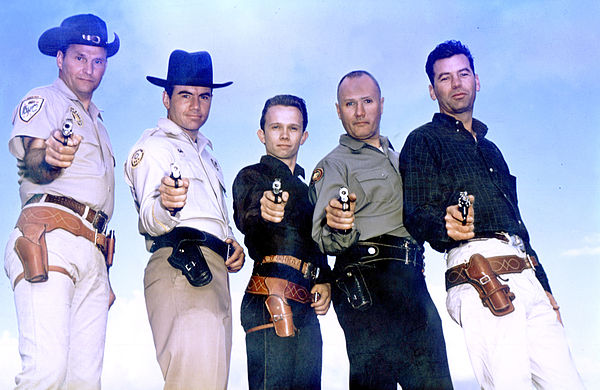MikeKardec
One Too Many
- Messages
- 1,157
- Location
- Los Angeles
Actually what they were using was a semi wadcutter, which had a conical taper with a fairly large flat nose(meplat) and then a fairly narrow, square shoulder , the design attributed to the late Elmer Keith, and sometimes callet a Keith bullet. The flat meplat would aid in tissue damage, and the full caliber shoulder would cut a clean hole in a target, almost as good as a full wadcutter. The wadcutter was strickly a target bullet, with a full diameter meplat that was most ofter completely flat, so it would cut a clean hole in a target for scoring, and was a very short range bullet. I have shot semi wadcutters in my 1911 Colt and they function quite well. Those do have a bit more taper than those generally used in a revolver.
You are quite right but you got me doing some research because that's not quite what I meant. Here's what I found on the sort of load I was referring to -- http://www.handgunsmag.com/ammo/ammunition_hg_wickedwadcutters_200901/ There's a bunch of computer nonsense in the middle of the article so you have to read past it. If you continue to be interested go-ogle the policeman mentioned in the article, Jim Cirillo, he would have been a younger Law Enforcement officer during the time the guys I mentioned were active, in fact his NYPD stakeout squad service started right around the time I first met Jim Worrell, the FBI agent who might have made the wad cutter comment, it was nearly 50 years ago and I was a kid so my memory is foggy. Anyway, I doubt any of these guys were very secretive about what worked and what didn't, law enforcement was a small community back then.
It's probably important to recognize that these guys may have been working within departmental guidelines and with equipment that has been surpassed, and that the general state of "wisdom" has evolved since then. That said, the more I compare the level of knowledge from the 1930s to the 1960s on MANY subjects the more I'm impressed with what used to be known. Today we get wrapped up in "theory" and "potential" and what is the faddish thing to say or do or think and sometimes forget the useful things that came before. I live in LA, a city that loves it's fast cars but has absolutely terrible streets. When I talk to younger car guys and tell them that the high profile tires and long travel suspensions that used to be found on many automobiles are better for zipping around our town they are aghast at my heresy yet they all complain about the streets eating their 19" wheels. The same tire sizes and spring lengths that worked for our fathers in the 1960s in a world with dirt roads, heavy snowfall and broken pavement are actually superior in a city where the earth never stops moving ... if they were attached to modern suspension geometry all the better. The wheels and tires sold today are intended for perfectly flat racetracks; they have tremendous "potential" but between the potholes and the hot top patches you can't unlock it on Mulholland Drive. As many here have discovered a modern suit is a straight jacket but an older style with high cut armholes and action pleats can allow you to do nearly anything without taking it off. In some cases I think we are outsmarting ourselves ... we just have to figure out which ones!
On the other hand it is worth noting that I suspect these wad cutters were both hard cast and very heavy, a lot like a magnum hunting bullet. This wadcutter idea may have been superseded by hot loaded hollow points and was intended for a short bbl, low flash, low recoil, round to be used in stressful conditions. It's interesting history, not necessarily a recommendation.
Last edited:



